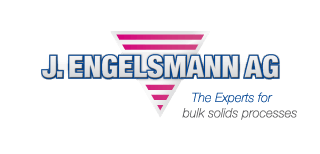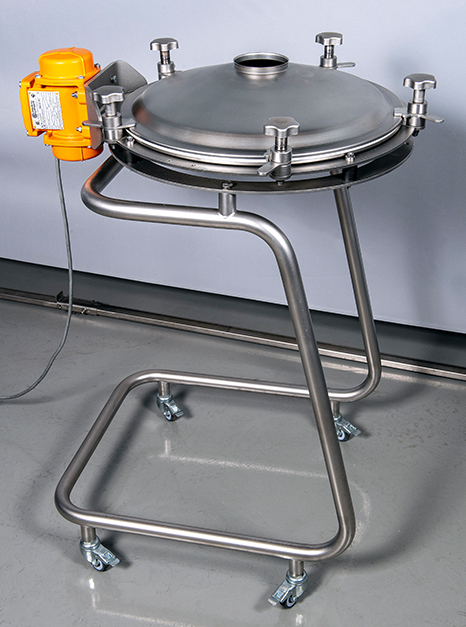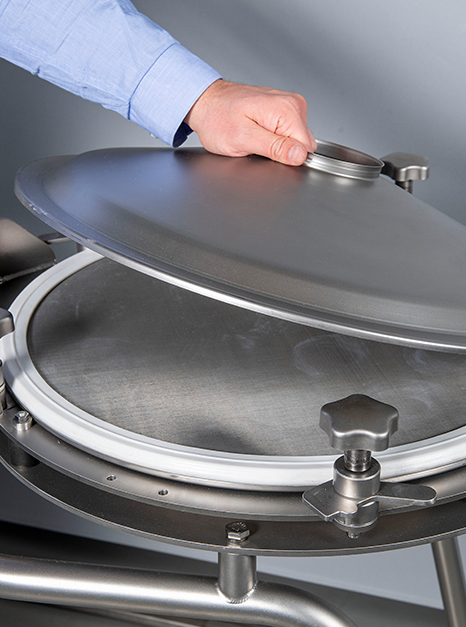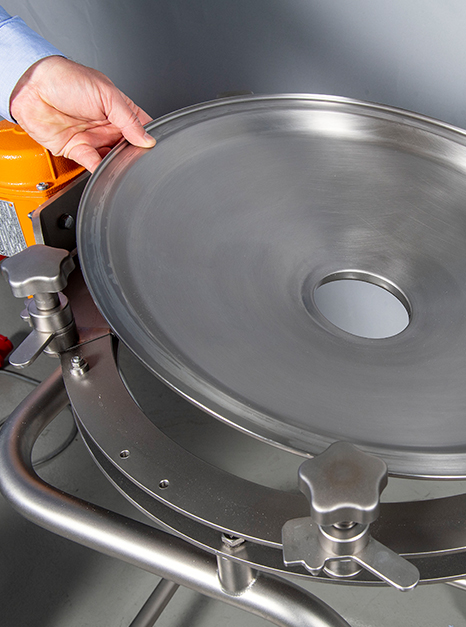28.04.2020
Why you shouldn't do without protective screening
Protective screening is probably one of the most common screening procedures in industrial manufacturing processes. You will learn why you shouldn’t do without protective screening, and what makes a good protective screen using the example of the reworked Engelsmann screening machine JEL Fix II.
Why protective screening?
Protective screens are used to eliminate disruptive foreign objects and impurities from bulk goods. These foreign objects can be plastic residues, for example, or metal parts such as screws which end up in the product by accident and can cause contamination. Lost knives for cutting bagged goods or protective gloves have also been found in products. To ensure a consistently high quality in the end product, these foreign objects must be separated before the product is put into its sales packaging. If this doesn’t happen, the worst-case scenario for the manufacturer is product recalls and a damaged public image. Contamination doesn’t just risk severe damage in the end product; it can also bring it about in the production process itself. For example, metal parts can damage the sensitive machine equipment and cause expensive repairs or production down-time. This is why protective screens have two tasks, above all: they prevent disruptions in the production process and ensure that the end product has a consistently high quality.
Where are protective screens used?
Protective screens are always used where the safety of the production process or the quality of the product could be endangered due to contamination. Theoretically, this can occur at any point of the production process, but there are a few typical applications:
When raw materials are delivered
Here, protective screens ensure that contaminants do not end up in production at all, or that the products are not stored with contaminants in them. Because biological contaminants in particular can develop germs which quickly spread, and in this way, they can contaminate whole batches of raw material. If the bulk goods are delivered via tanker or silo truck, we can use tanker screens. These are simply installed in the conveying line between the silo and the vehicle, and reliably separate out any foreign objects.
In the production process
Foreign objects don't just get into the production process via the delivered raw goods; contamination can also occur within our own processing systems: Metal parts which become loose from machinery during operation or maintenance work without anyone noticing and fall into the production flow; or wear from metal surfaces. To ensure the required product quality, we can use protective screens in various points within the production process.
Before packing the final product
At the latest before the product is filled for sale, you should ensure that the product is free from all undesired components. Contaminants which remain undiscovered until this process stage have a direct effect on the product quality. Protective screens are thus an important safety anchor in many systems during the final quality assurance check of the end products.
What makes a good protective screen?
Compact structure
Even if their function is of great importance: Protective screens are rarely the core part of a system. In most cases, they merely represent a necessary stage of the process which should be integrated in a way which takes up as little space as possible. In order to meet this demand, JEL Fix II has a very compact structure: With a screen surface of 0.50 m², the complete screen trough is only 27 cm high. Depending on the requirements, JEL Fix II can come with or without a base frame (either stationary or mobile). Without a base frame, the round screen can also be integrated directly into existing system components, e.g. Big Bag emptying stations or sack chutes. The screen can be installed directly onto the outlet of the emptying hopper so that emptying and protective screening can take place in one work step.
Throughput rate
The throughput rate of a protective screening machine must be coordinated precisely with the production process so that the screened product is always available in an adequate quantity and in an optimal condition. In order to represent various throughput rates, JEL Fix II is available in three sizes: with a screen surface of 0.07 m², 0.20 m² and 0.50 m².
Another factor which influences the screening machine’s throughput rate is the formation of stuck particles. A stuck particle is a product particle which gets stuck to the screen mesh during the screening process. Special screen cleaning systems are used to avoid the screen repeatedly becoming blocked and a decrease in the machine's throughput rate. For JEL Fix II, you can choose between a ball cleaning system, ball-bearing cleaning system or ultrasound cleaning system for particularly fine powders.
Ease of use
Of course, usage also plays a big role for protective screens – the screens should be as easy to operate as possible. This aspect was also taken into consideration when developing the new JEL Fix II: The protective screen can be operated and disassembled completely without tools. The screen housing consists of a disc-shaped base and lid. Both parts can be removed from the machine base separately, in order to clean them thoroughly, for example. Changing the screen is also very simple: After loosening a few star grips, the lid and screen insert can simply be removed from the screen.
Ease of cleaning and hygiene
In many sectors, the hygiene requirements that equipment has to meet are increasing – protective screens are no different. Avoiding surfaces where product may accumulate and dead spaces, as well as easy accessibility of all parts, was the top priority when redesigning the JEL Fix II. The oscillating frame of the screening machine is made entirely from stainless steel and can be delivered with various surface treatments and roughness depths as required. Since the machine base is made entirely from round tubes, it is less prone to accumulation of product and is easier to clean. Things also stay hygienic inside the screen trough: The new profile seal can easily be removed for cleaning and then replaced again thanks to its pluggable design. It is made from either silicone or TPE and complies with FDR and EC 1935/2004 standards.
The bottom line: Protective screening is important for the quality assurance of intermediate and end products. Essentially, operators have three requirements when it comes to protective screens: You must be able to integrate the screen into the system environment in a clean and compact manner, operation and maintenance must be as simple as possible, and the screen must guarantee fast and thorough cleaning. With JEL Fix II, Engelsmann has created a simple and reliable protective screening design which impresses above all thanks to its ease of cleaning.









